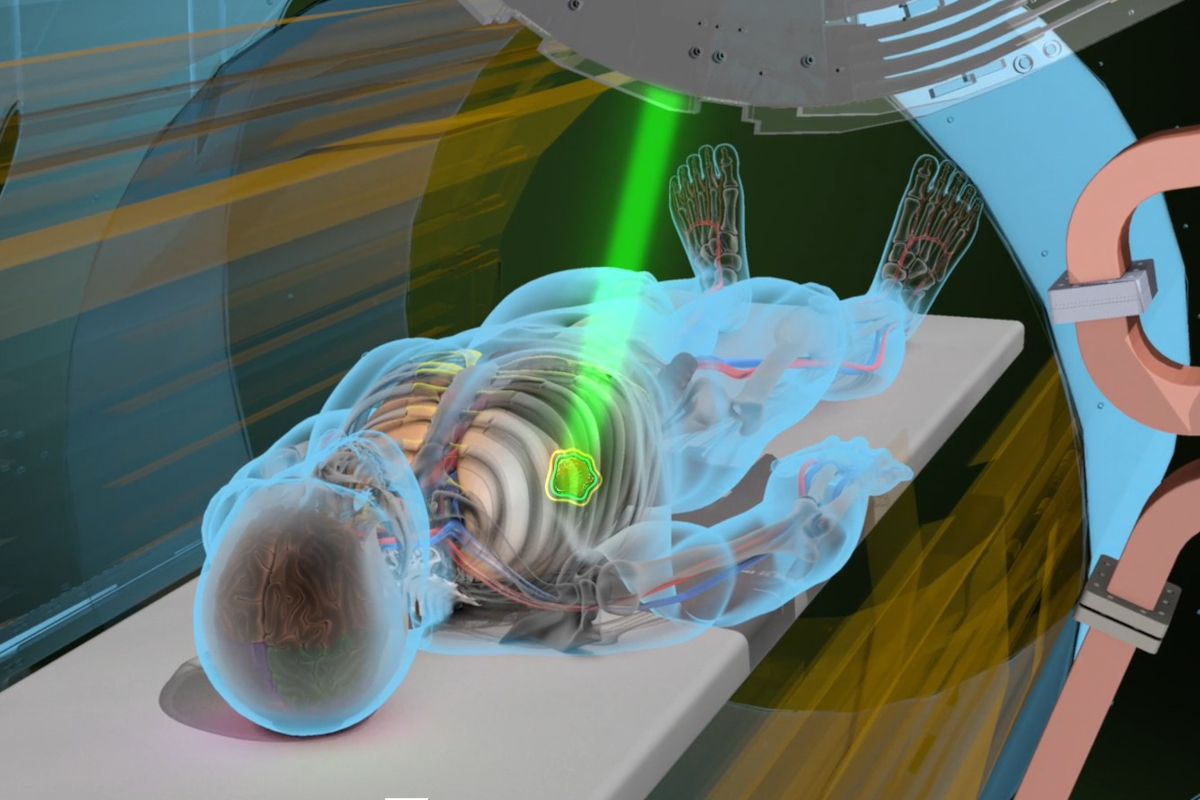Hershey Medical Center attacks cancer with MRI-guided radiation therapy

New MRIdian system delivers precise radiation doses, resulting in optimal patient care
A new cancer treatment system in use at Penn State Health Milton S. Hershey Medical Center can locate, target and track the position and shape of tumors while radiation is delivered. The end result is more effective radiation doses that minimize incidental exposure to surrounding organs.
The MRIdian Radiation Therapy System uses magnetic resonance imaging, or MRI, together with radiotherapy to treat tumors and cancers throughout the body. The MRI is able to capture several images each second, showing clinicians what is happening inside the body in real time as they use radiotherapy to attack the tumor.
“When a person breathes, swallows or digests food, their internal organs move. Even the slightest movement can affect the position of a tumor,” said Dr. Rodney Ellis, chair of the Department of Radiation Oncology at Penn State Cancer Institute. “MRI-guided radiation therapy allows us to hit a moving target and provide better care for the patient, preserving healthy tissue.”
While the radiation beam is on, the MRIdian Radiation Therapy System captures a constant stream of soft-tissue images with its MRI, acting on them nearly instantly. If the tumor or a critical structure – such as a nearby organ – moves beyond a specific boundary, the radiation beam automatically pauses. When the target moves back into the predefined boundary, treatment automatically resumes.
Ellis said the procedure is especially effective against prostate cancer, as it means fewer radiation treatments for patients, as well as fewer side effects and shorter recovery times.
The team of highly-trained cancer treatment experts at the Milton S. Hershey Medical Center also plans to target cancers of the liver, pancreas and lungs with the MRIdian Radiation Therapy System.
Each patient will have an individualized treatment plan and can expect anywhere from a few days to several weeks of treatment, depending on the size, type and location of their tumor, as well as other factors.
Hershey Medical Center is one of just 17 locations in the United States to use MRIdian’s MRI-guided radiation therapy.

- Photo gallery: Featuring images of the recent delivery and installation of the MRIdian Radiation Therapy System
- Interview: Dr. Rodney Ellis, chair of the Department of Radiation Oncology at Penn State Cancer Institute
- Interview: Deborah Berini, president of Penn State Health Milton S. Hershey Medical Center
- B-roll: The MRIdian Radiation Therapy System is delivered and installed at Penn State Cancer Institute
- B-roll: The MRIdian Radiation Therapy System in operation (credit: ViewRay)
If you're having trouble accessing this content, or would like it in another format, please email Penn State Health Marketing & Communications.
